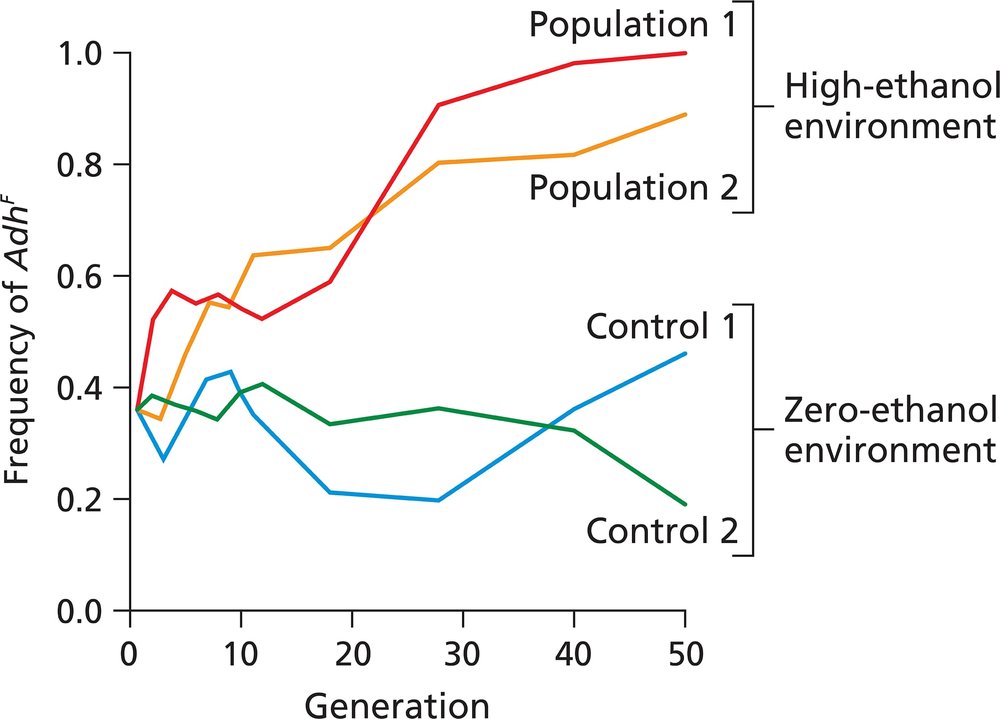Here are the essential concepts you must grasp in order to answer the question correctly.
Natural Selection
Natural selection is the process where individuals with advantageous traits have higher survival and reproduction rates, leading to an increase in those traits in the population. In this experiment, the increase in AdhF allele frequency in high-ethanol environments suggests that this allele confers a selective advantage under ethanol stress.
Recommended video:
Allele Frequency and Genetic Variation
Allele frequency refers to how common a particular allele is in a population. Changes in allele frequency over generations indicate evolutionary processes at work. The graph shows how the AdhF allele frequency changes differently in ethanol-rich versus ethanol-free environments, highlighting the role of environmental factors in shaping genetic variation.
Recommended video:
New Alleles and Migration
Role of Environmental Pressure in Evolution
Environmental pressures, such as the presence or absence of ethanol, can influence which alleles are favored by natural selection. The experiment demonstrates that ethanol acts as a selective pressure, increasing the frequency of the AdhF allele in populations exposed to it, while in ethanol-free environments, allele frequencies fluctuate without a clear directional trend.
Recommended video:







